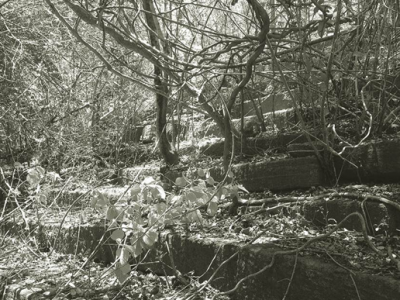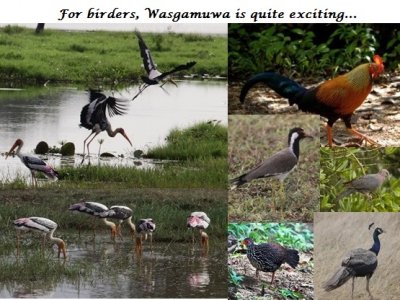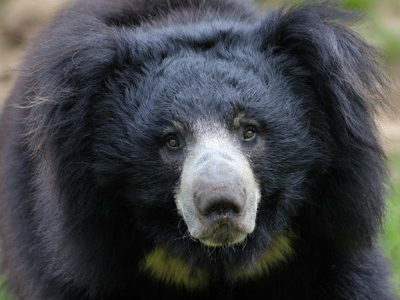The Complete Guide to Wasgamuwa National Park
Wasgamuwa national park is one of the most-visited nature reserves in Sri Lanka; you can learn everything about it here.
Within Sri Lanka’s Polonnaruwa and Matale districts, Wasgamuwa National Park can be found around 50 kilometers to the northeast of Kandy. The Sudukanda Mountain Range, which runs between the Amban Ganga and the Mahaweli Ganga rivers, forms the park’s northern and southern boundaries, isolating it from the rest of the country. On the right bank of the Mahaweli River, the park is contiguous with the Riverine Nature Reserve and has a little over 39,000 hectares.
Wasgamuwa National Park, once a bustling hub of ancient Sri Lankan culture, has remained relatively undiscovered in recent years. But over the past few years, it has quickly regained its status as a must-see destination.
Some background on the origins of Wasgamuwa National Park
The Mahaweli Development Project displaced many species of wildlife, and in 1984, it was named a national park as one of four such parks. The fact that it is located inside the boundaries of the ancient city of Polonnaruwa explains why there are so many historical ruins there. Parakramabahu 1 constructed the ancient irrigation tanks in the park, and their ruins may be seen across the area. These tanks are named Malagamuwa, Wilmitiya, Dasthota, and Yoda Ela.
Yudangana Pitiya, the location of the infamous last battle between Chola King Elara and Sri Lankan King Dutugemunu, and Kandaura Pitiya, the purported army camp of King Dutugamunu, are both within easy driving distance of each other. Artifacts such as King Sri Vikrama Rajasinha’s bowl and many bronze figures, discovered within the chaitya and now housed at Yudangana Viharaya, may be seen in the park’s Chulangani chaitya, which was constructed by King Mahanaga.
Physical characteristics of Wasgamuwa
The rivers Mahaweli Ganga and Amban Ganga form the eastern and western boundaries of Wasgamuwa National Park. And as mentioned, the park spans about 36,900 acres. Sudu Kanda, a hill, is nearly 500 meters high, but the Mahaweli Ganga is just 76 meters below sea level. Hikers will like the area around the Sudukanda mountain range and its many tiny reservoirs. The majority of the land is covered in a tropical dry mixed evergreen forest, which is characterized by its towering trees.
Over 150 plant species have been documented in Wasgamuwa National Park, the majority of which are found in the tropical dry-mixed evergreen forest that makes up the park’s primary vegetation type.

The native animals of Wasgamuwa National Park
As early as 1938, a section of Wasgamuwa was set aside as a protected natural area. The park’s rich diversity of animals is a direct result of the early conservation efforts made there. Wasgamuwa is home to 23 animal species and 140 bird species. The park is home to two species of monkeys, the toque macaque and the purple-faced langur, both of which are unique to Sri Lanka. It is also typical to witness large herds of water buffalo and Sri Lankan axis deer.
Wasgamuwa is a fantastic spot for birders because of its abundance of birds, which include five unique species. Birds like the chestnut-winged cuckoo and the rare red-faced malkoha have been seen here. The reservoirs and streams of Wasgamuwa attract a variety of wildlife, including the smaller adjutant, yellow-fronted barbet, and Sri Lanka spurfowl. Peafowl, painted storks, black-headed ibises. European spoonbills are some of the other waterbirds that may be seen here.
The park is home to a huge population of Sri Lankan elephants and is designated as an Important Bird Area (IBA). At least five indigenous reptile species are among the 17 species found in the park. It’s also not uncommon to see a water monitor or a mugger crocodile.

Sloth bears and elephants at Wasgamuwa National Park, Sri Lanka.
There is a recognized subspecies of sloth bear that lives in Sri Lanka. It’s called the Sri Lankan sloth bear. The species is critically endangered since there are just 1,000 left on the planet and as few as 500 in their natural habitat in Sri Lanka. Being mostly omnivorous and very dependent on the forest, forest loss is a major threat to the Sri Lankan sloth bear.
Named after the Sinhalese “Walas Gamuwa,” where “Walaha” means bear and “Gamuwa” means the woods, the Wasgamuwa National Park has long been recognized as the best spot to see these creatures in their natural habitat.

Typical weather in Wasgamuwa
The average annual high temperature in this national park is 28 degrees Celsius, and it is located in a dry climate zone. The dry season is July through September, and annual rainfall is between 1,650 and 2,100 mm.
When is the ideal time to go to Wasgamuwa National Park?
In general, the monsoon season (November–May) is the ideal time to explore Wasgamuwa National Park. There have been increased sightings of elephants recently. When the rainy season ends, the elephants go to the adjacent national parks for refuge.
Reaching Wasgamuwa National Park
Visitors from all across Sri Lanka, but particularly those traveling from Kandy, will appreciate the park’s central location. One may enter the park via Kandy, Hasakala, or Hettipola, although all roads lead to Handungamuwa. From Kandy, it is around an hour’s drive to the National Park’s entrance point at Wasgamuwa (57 km).
From the Kandy-Mahiyangana highway, take the Hasalaka exit and continue to Wilgamuwa. This will bring you to the Wasgamuwa entrance. From Matale and Polonnaruwa outlying settlements, you may access the park through Laggala. From there, the route leads straight to the Wilgamuwa region, which is near the National Park.
Wrapping up
Wasgamuwa National Park is the best place to go if you are interested in visiting a national park that is home to many creatures that are only found in their given area. Its vast history, along with the incredible species and fauna that inhabit the area, makes it an ideal vacation spot for anyone interested in both history and nature.


Customer
I’ve been exploring for a little for any high-quality articles or blog posts in this kind of area . Exploring in Yahoo I eventually stumbled upon this web site. Reading this info So i’m satisfied to show that I have a very just right uncanny feeling I found out exactly what I needed. I so much certainly will make certain to don?t put out of your mind this site and give it a look on a constant basis.